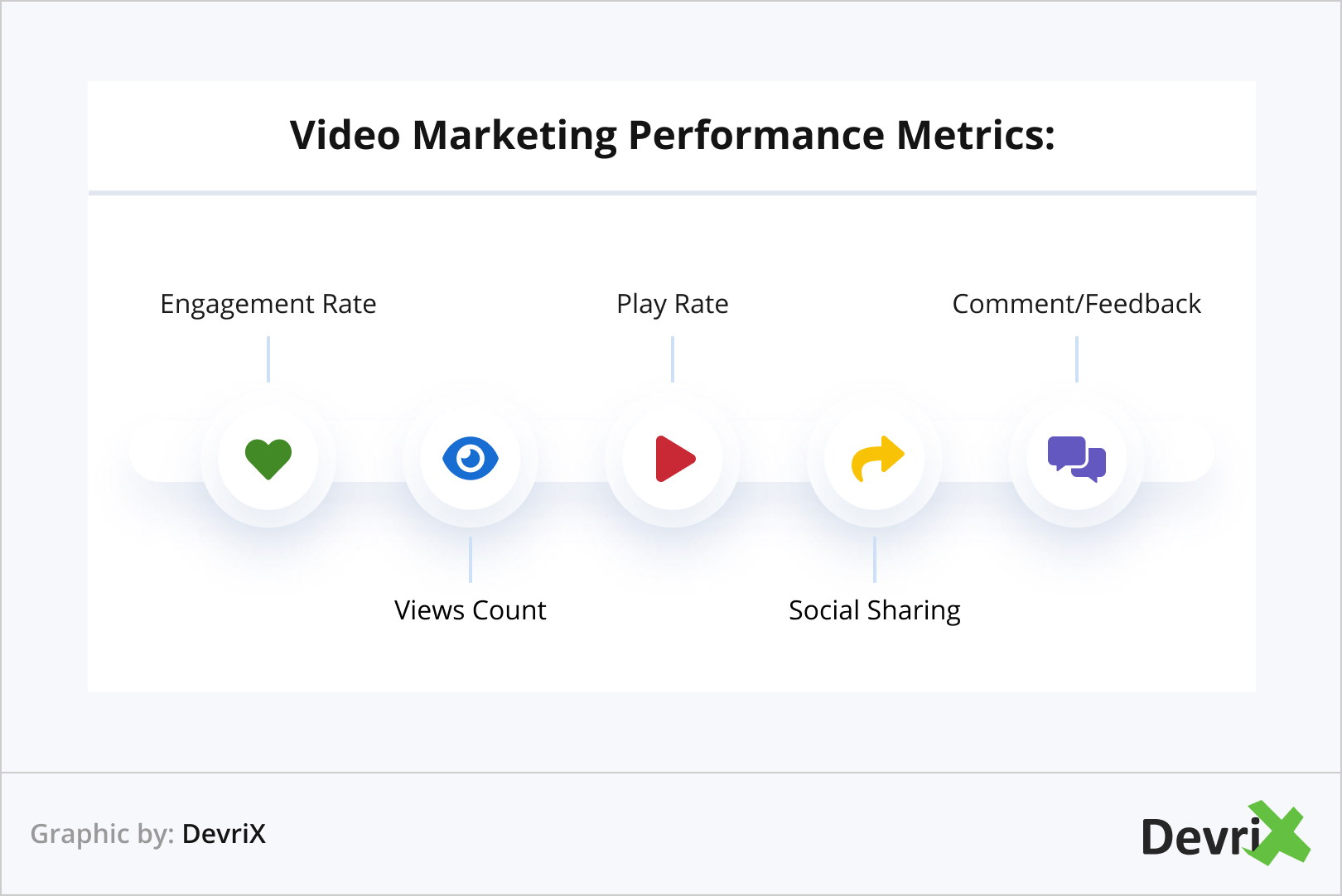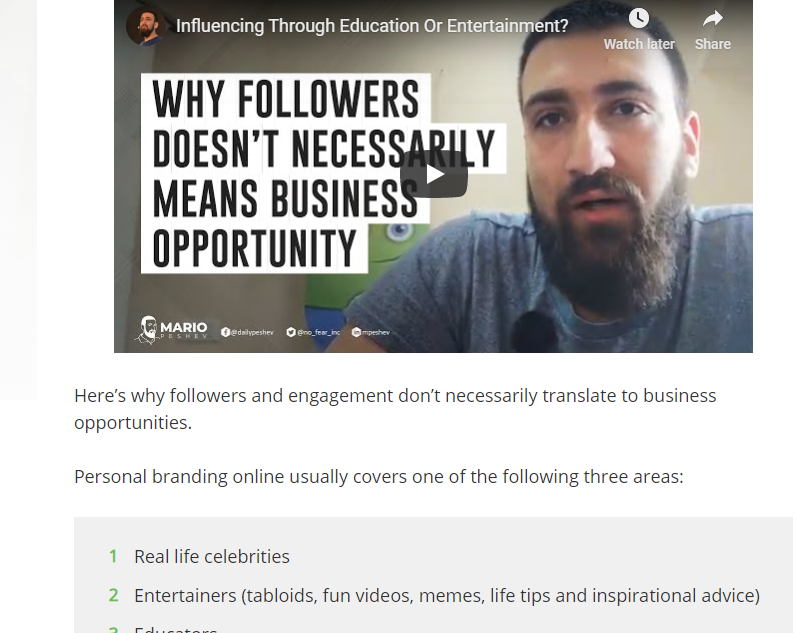You’ve heard it by now – video is the present and the future of marketing. And the statistics about video marketing for business show it!
82% of Internet traffic is video content in 2022. Currently, YouTube is the second most visited website worldwide. People spend about 1 billion hours watching videos there every day.
However, people are not only watching videos to educate themselves, but also to decide on what products that they want to buy. Actually, up to 96% of customers stated that a video helped them make a purchasing decision.
If you are yet to build a video marketing strategy, there’s no time to wait! With 86% of businesses using advertising videos, you can’t ignore its importance anymore.

Now that we have the statistics out of the way, let’s focus on how video marketing helps your business, in our definitive guide.
Why Is Video Marketing Important?
People consume video content about 19 hours a week which speaks a lot about the power of this medium in business strategies for success.

First, there was the rise of smartphone technology that made watching video content easier and more convenient. Then the pandemic boosted online media consumption by 215% in the U.S., with video streaming accounting for much of that growth. The trend is only expected to continue as things begin to go back to normal.
For businesses, video content marketing is an essential part of their overall strategy. It’s a way to reach a large audience quickly and efficiently, and it’s an extremely versatile medium that can be used for everything from brand awareness to lead generation.
So, there’s no doubt that video marketing is here to stay, and savvy businesses will continue to use it to reach their target audiences.
Types of Video Marketing Formats
Video marketing for business has three major purposes:
- Awareness: Teaching customers about your brand and products. These videos should be entertaining so that you attract your target audience that wants to learn more about your company.
- Engagement: Videos that trigger interactions online, be it a “like, comment, or share”.
- Education: Educate your audience. It is one of the most powerful purposes of video marketing. You can teach your customers how to use your product or service with a video tutorial. Or you can create a webinar to showcase your industry knowledge.
Now, let’s break down the categories and look at the types of videos that fall under each one.
Awareness
Round-ups
Roundup videos revolve around a topic. The best round-up videos are:
- Short: Four minutes or less to keep the audience engaged.
- Visual: Combines g clips or stills of people, products, or places.
- Diverse: Provides a wide range of topics so there’s something for everyone.
Company Culture Videos
If you want to provide your customers with a view of your company’s values and mission, a video that presents your company culture is excellent. Company culture videos help your target customers understand your company and why you’re different than other brands.
Interview
Interview videos highlight team members’ or customers’ questions. These videos are excellent if you want to share your brand’s values and align them with someone interesting or inspiring.
Engagement
FUNNY videos
Getting your viewers to laugh is a great way to make your brand relatable to them.
Vlog
https://www.youtube.com/watch?v=iipzJLE4uSM
A vlog is a video journal filmed by one or more persons using a webcam. In most cases, vlogs describe someone’s personal points of view about a specific topic.
Education
HOW-TO VIDEOS
A how-to video can describe a process or answer a common question that your customers have. This video marketing strategy is terrific for building your brand reputation and increasing the audience’s trust in your business.
Product Reviews
Around 50.000+ years of product video reviews have been watched on YouTube since 2016. It’s because they’re effective. This way, people feel like they’re getting an honest review from someone that they can relate to.
Q&A (Questions and Answers) Videos
Record someone from your team interviewing another team member as an expert, or take questions from your audience and answer them in a video.
Announcement Videos
Have big news for your audience? An announcement video is a great way to get your message across and excite your audience.
Case Studies and Customer Testimonials
When it comes to increasing your conversion rate, case studies and testimonials are invaluable. Thanks to the psychological effect of social proof, people love to use something others are using.
Live Talks and Presentations
If one of your team members is giving a speech, your brand can capitalize on his/her expertise with a video. Film the presentation or the talk, do some editing, and you’ll have an amazing piece of content for your audience.
Developing Your Video Marketing Strategy

Video marketing begins when you define your video marketing strategy and goals.
Your goals will help you identify:
- The videos that you need to create.
- The promotion strategies of your videos.
- The video distribution strategy.
- The target audience of your videos.
- Your most valuable video marketing metrics.
The following are excellent starting points to help you determine what you want to achieve with your video marketing strategy:
- Generate more sales
- Increase brand awareness
- Connect with customers on social media
- Grow market share
- Promote new products and services
- Build relationships with customers
When you start with broader goals, it’ll be easier to refine them for the rest of your video content marketing strategy.
In the same manner, as with other business goals, you can use the SMART methodology:
- Specific: Clearly defined goals.
- Measurable: Goals that can be analyzed.
- Achievable: Can you achieve your goals with the resources at hand?
- Realistic: Are the goals of your team, your schedule, and the corresponding resources realistic?
- Time-sensitive: You’ll need to define the urgent tasks to achieve your goals.

As we’ve specified above, there are lots of types that you can use for your video marketing strategy. However, you need to tailor content to your audience. This is why you need to define your goals so that you know which videos suit your needs.
Before you record your video, have a plan! Write that script. Plan every scene. Decide which people you will include in your video. A plan will save you time and effort, and make it easier when recording and editing your videos. And don’t forget, adding captivating YouTube intros can make a big difference in grabbing your audience’s attention.
Determine Your Video Marketing Budget
Before you start building your video marketing strategies, you must determine the budget you can spare on it. Can you afford a professional video? Do you have the money for the cameras, microphones, and the rest of the equipment? Most importantly, how much money will it take to film your videos?
It all comes down to the main objective of your videos. What are you trying to achieve with your video content marketing? Do you need brand awareness? Or do you want to boost your lead generation stream?
The quality and the costs of your video production will be determined by the following three factors:
- Time: A high-quality video is impossible without investing in time, money and resources. Your best option is to plan your video strategy months before and secure every resource necessary to film your videos on time.
- People: The more people work in the video production process, the higher your expenses will be. To cut down the costs, have one of your talented employees film the videos. For post-production, hire freelancers as a reasonable alternative to video agencies.
- Equipment: Video production requires filming equipment, as well as video editing software. Instead of purchasing, renting the equipment might be a more affordable option.
Think about where and how you plan to spend your money, and how much everything will cost. The success and effectiveness of your video marketing campaign might depend on your budget, and that’s why you need to set it properly and stick to it!
Optimize Your Videos for the Most Popular Channels
Predicated on where you will share your videos, you’ll need to optimize them for high interaction on each channel.
Facebook Video Optimization
Facebook still leads the way when it comes to video engagement. Almost 4 billion video views are counted on the platform each day.
Here’s what works when it comes to building video content for the platform:
- Design for Mobile-First: People watch 54.25% more videos on their smartphones than on a desktop computer in 2022. Because most people hold their phones upright, the vertical video format works best with 4:5, 2:3, and 9:16 ratios.
- Keep the Videos Short: People spend 1.7 seconds on average with any piece of video on their mobile devices. This is why you must keep your mobile videos short.
- Add Captions: Up to 85% of video views occur on mute. Ensure that there are captions of the dialogue for people watching on mute.
- Upload on Facebook: Native Facebook videos deliver up to 530% more comments and a 477% higher share rate in comparison with YouTube videos.
YouTube Optimization
YouTube brings more audiences than any broadcast or cable TV network. As reported by Google, YouTube video ads can significantly boost your millennial audience, engagement rate, and the views of your former videos.

Here’s how to ensure that your YouTube videos perform the best:
- Select your thumbnail image wisely. It’s the first thing users see before they click on your video, and this is why you need to make sure it’s attractive.
- Keep the videos relatively short. Just like with Facebook videos, shorter videos perform much better on YouTube.
- Experiment with titles and CTAs. Even small alterations can improve your video view rate.
- Prevent ad fatigue. Don’t show the same video ad too frequently. Have at least two or three versions of your video ad to keep the engagement going, and measure which version performs the best.
Measuring the Performance of Your Video Marketing Campaigns

Analyzing the success of your video marketing campaigns will help you understand what’s working and what’s not. Perhaps you need to be more creative or strategic with your videos. Maybe you need to trim down the length of your videos and make it optimal for each channel that you post the video on.
Some things that can be discovered if you measure your video marketing success:
- Engagement Rate: How much time did users spend watching your video? Did they watch the entire video, bounced early, or skipped it? The engagement rate should be a sign of video quality, message, and whether your video is too long or short.
- Views Count: View count is the number of times a video has been watched. For example, on YouTube, a view is counted starting from 30 seconds and above, and on Facebook, it’s only 3 seconds. Knowing how to use each social network’s analytics can help you plan your future video marketing campaigns.
- Play Rate: The number of users that played the video. It is a metric influenced by the thumbnail, the headline and CTA copy, and even the video size.
- Social Sharing: A metric that shows how many times your video has been shared by people. If your videos are getting lots of shares, it’s a sign that your content is resonating with people.
- Comments/Feedback: If people are leaving comments about your videos, see if they’re positive or negative and if you have to reply, reply positively. People who take their time to watch and comment might become your customers.
Distributing Your Videos
When you prepare your video marketing strategy, it’s time to distribute your videos. Without being present where your target market is, you will have a hard time reaching your audience.
The following are some of the best places where you can distribute your videos:
Your Website
Your customers go through the buying process mostly on their own. This is why it’s important to provide them with all the necessary information on your website.
Embedding videos on your website can help you improve your SEO and increase the time that people spend on your pages. You can embed your videos on your homepage, in the about section, product/service pages, and in your articles as well.
Landing Pages
Running a marketing campaign is impossible without a landing page. Including videos improves landing pages. According to Unbounce, videos can increase the landing page conversion rate by up to 80%.
The following are some of the best practices for including videos on your landing pages:
- Keep the videos above the fold
- Keep them short
- Use an attractive thumbnail
- Include a CTA in the video
- Size the video appropriately
Your Email Newsletter
Including the word “video” in your email subject line can increase open rates by 19%. Furthermore, videos in your email messages can increase click-through rates by a massive 96%. That alone makes including videos into your email a no-brainer.
Here are some quick tips to get you started:
- Embed a thumbnail in the email to increase interest.
- Leverage CTAs in your videos so users will take action.
- Use an analytics platform to track and measure your video email campaigns.
Your Social Media Channels
Social networks are the most popular way to distribute video. Of course, YouTube and Facebook are the first things that come to mind. But, you should also pay attention to other channels such as LinkedIn, Instagram, and Twitter.
LinkedIn users share videos 20 times more than other types of content on the platform.
Considering the professional emphasis of the platform, it’s always a good idea to have niche videos focused on one core expertise.
In line with LinkedIn’s advice for sharing videos on the platform, here are some quick tips to get you started:
- Engage your audience immediately
- Focus on visual storytelling
- Include subtitles or captions
- Test out a longer video for your lead generation goals
- Tailor your headline so it’s relevant to its target audience
As the most visual social network, Instagram has more than 1 billion active monthly users, it’s a platform that you can’t ignore.
Even though there’s a 60-second limit on videos, you can post teaser videos that encourage people to click on your links.
View this post on Instagram
You can also post videos in your Stories, and Reels where you can post long-form vertical videos up to one hour of length.
Twitter has a lower number of monthly active users than other networks (229 million). But, you shouldn’t rule it out as a place to distribute your videos. Moreover, with 80% of Twitter engagement happening on mobile, it’s an excellent platform where you can reach people that are on the move.
When you post your videos on Twitter, remember to:
- Hook users immediately. Things happen quickly on the platform, so you need to grab people’s attention in the first couple of seconds.
- Trim down your videos. Attention spans on Twitter are generally lower than on other networks.
- Repurpose your longer videos. Twitter is excellent for teaser videos that lead people to longer-form content.
Optimizing Your Videos for Search Engines

Image source: YouTube
Search engine crawlers don’t grasp what’s in your videos. They depend on metadata to understand them, along with user interaction data. While it’s essential to optimize your video’s metadata, it’s just as important to optimize video marketing for business success.
Make sure to supply the following metadata on the pages where you place your videos:
- Video Title: Video titles are crucial when explaining what’s in your video. Where required, use keywords. Place the most important words first in your title, when possible.
- Video Description: Your video description should include keywords and an explanation.
- Video Tags: If you upload a video to a channel that allows you to include tags, this can help increase its findability on search engines.
- Surrounding Text: For each of your pages, search engines scan the surrounding text to understand what the video is about. If you want to be detailed, you can include a video transcript in the body text.
Upon filling out your video metadata, notify Google about it. Open the Search Console and re-upload your site’s .xml sitemap to provide the search engine with fresh info that indexes your videos in SERPs.
Wrapping Up
We hope that you enjoyed our video marketing guide. In the beginning, video marketing can seem overwhelming. But by taking it step by step, your strategy will bring you the desired results.
Remember to identify your target market and plan your video marketing strategy accordingly. Think about how your video content and your promotional strategies can make an impact with your target audience so that you can create even better videos in the future.








![Influencer Marketing Statistics Every Business Should Know [Infographic]](https://devrix.com/wp-content/uploads/2019/10/Influencer-Marketing-Statistics-Every-Business-Should-Know-Infographic@2x-380x160.png)